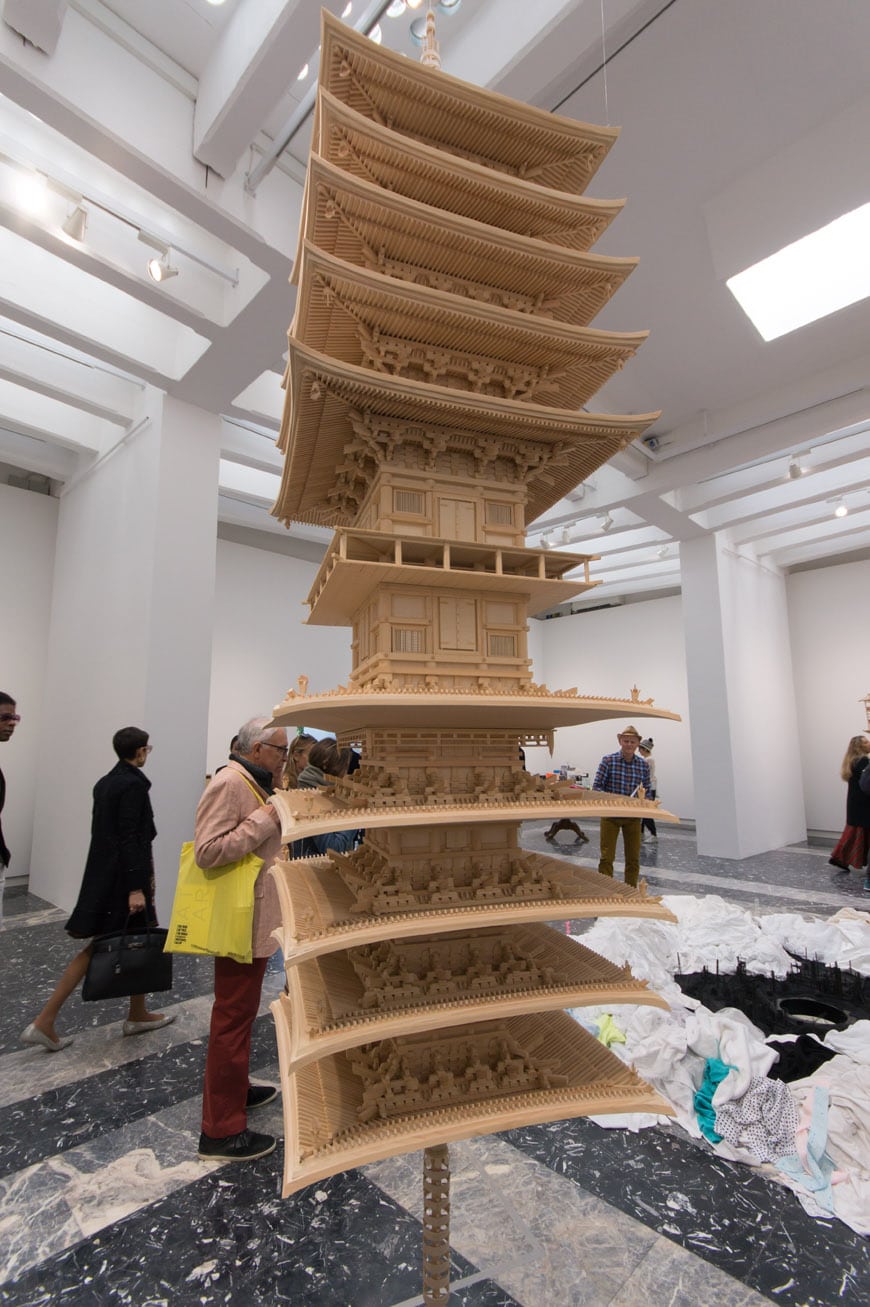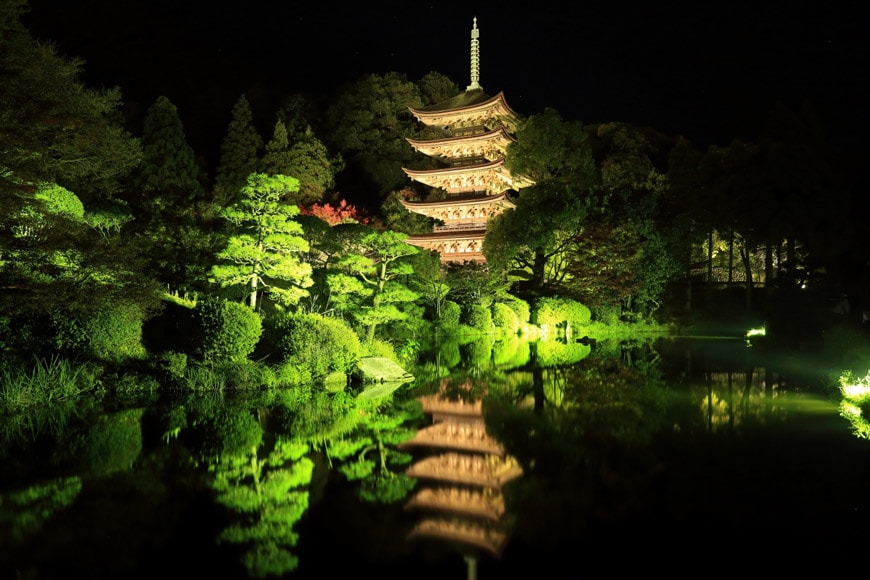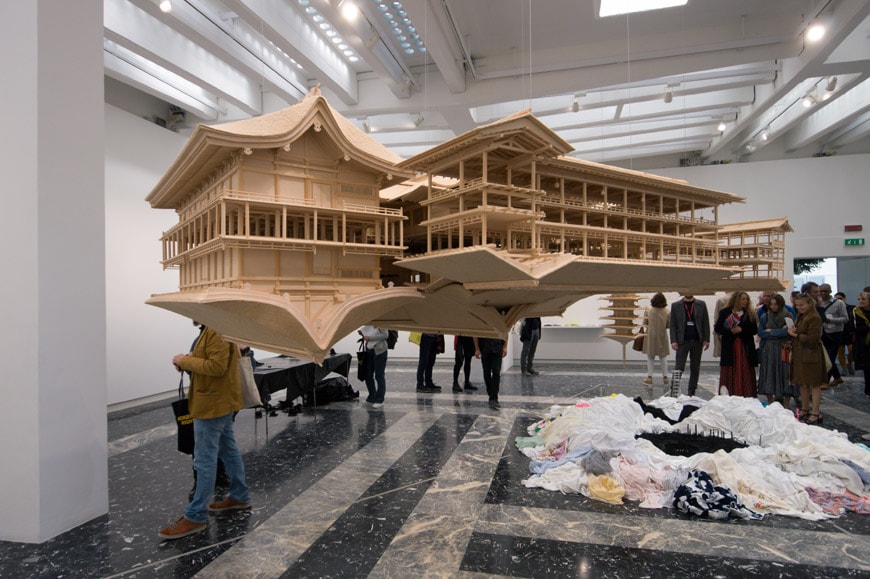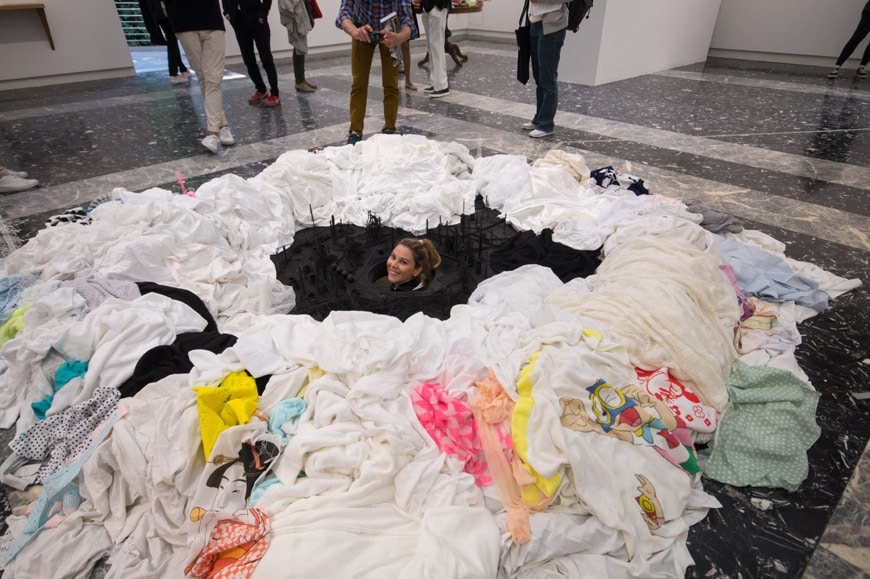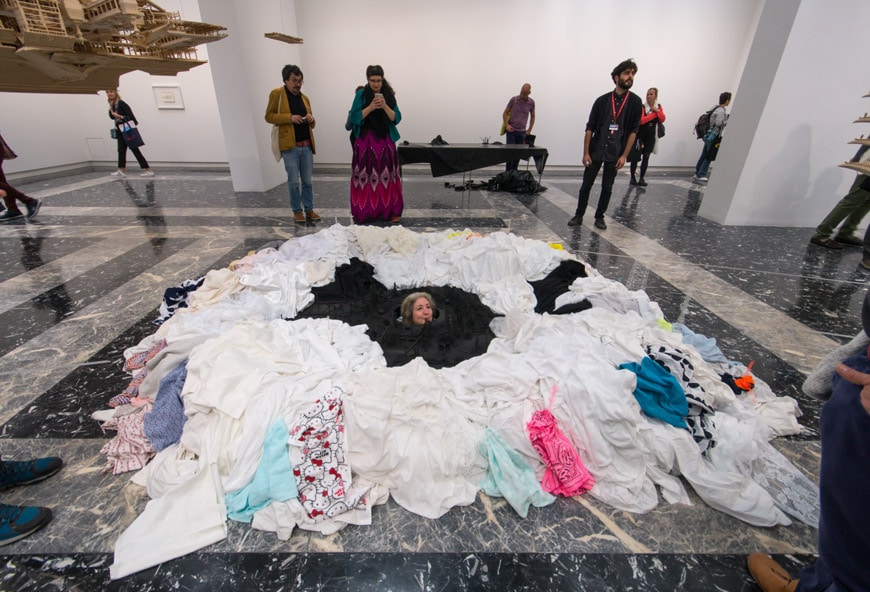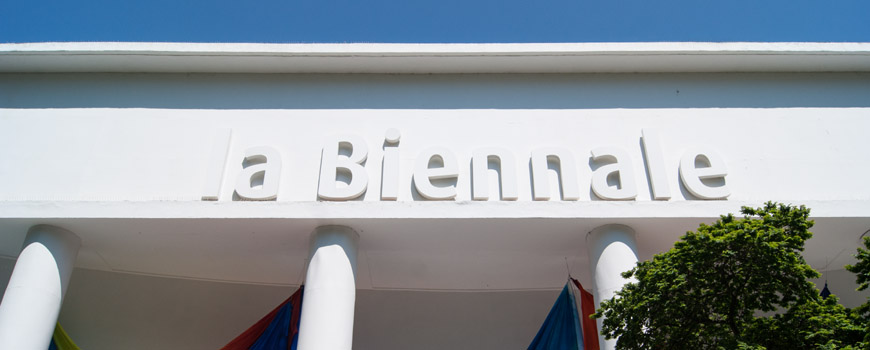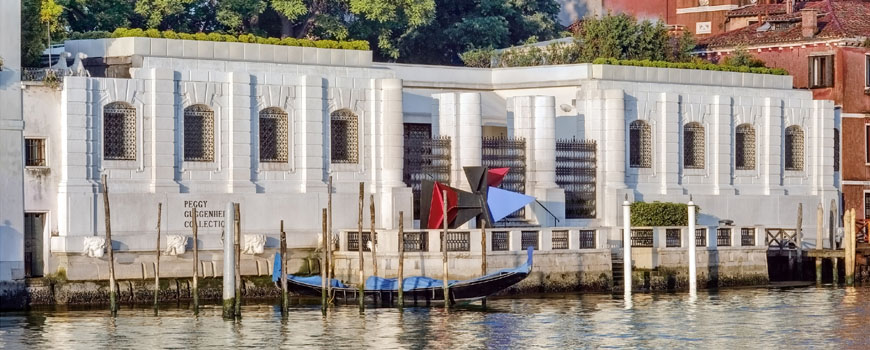Takahiro Iwasaki – Pavilion of Japan | Venice Art Biennale 2017
Commissioner: The Japan Foundation
Curator: Meruro Washida
Featured artist: Takahiro Iwasaki
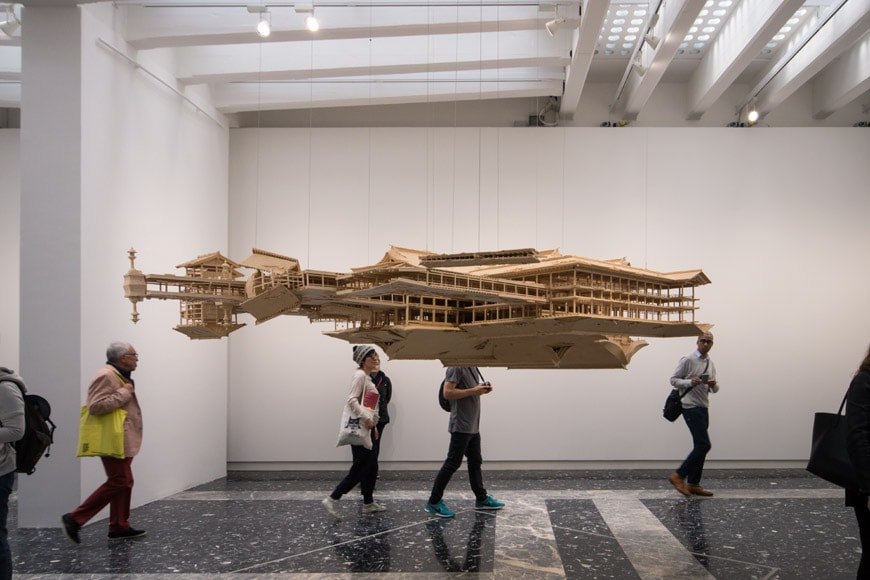
Takahiro Iwasaki, Reflection Model (Ship of Theseus); 2017; Japanese cypress, plywood, wire; photo © Inexhibit
Takahiro Iwasaki, “Turned Upside Down, It’s a Forest”
Pavilion of Japan | Venice Art Biennale 2017
The Japanese pavilion at the 57th Venice Art Biennale presents a solo exhibition of artist Takahiro Iwasaki (b. 1975, Hiroshima).
Iwasaki is renowned for his works, through which he transforms apparently banal materials and residual objects into surprising sculptures, meticulously conceived and built.
Overall, the work of the Japanese artist is characterized by the inclusion of elements that are not physically present within the artwork, yet that are an essential part of its identity – such as water in his reflection model series -, by a constant contrast between order and disorder, and by a profound interest in environmental and social issues.
The exhibition curator Meruro Washida, explains how the artistic vision of Iwasaki is intimately linked to his being born in Hiroshima.
“Takahiro Iwasaki was born and raised in Hiroshima where he currently continues to base his practice. Born in 1975, Iwasaki himself has of course no personal experience of the atomic bomb. Nevertheless, the history of Hiroshima appears to deeply permeate his works. The city of Hiroshima was instantly annihilated as a consequence of the atomic bomb, and although it had previously served as a military city, its image had changed 180 degrees after the war to be widely recognized as a city of peace. Iwasaki’s use of figurative representation in his works, in other words, the way something comes to present itself in an entirely different manner when happening upon a certain detail, is indeed connected to Hiroshima’s experience. The use of everyday objects in Iwasaki’s case draws influence from the numerous artifacts housed in the Hiroshima Peace Memorial Museum, which convey daily necessities that have instantaneously been distorted and made devoid of their function. The fine delicacy of his handiwork which could even be described as craft-like, seemingly traverses the worlds of the micro and macro, forming a connection with the atomic bomb in which the power of minuscule atoms had destroyed an entire city. In 2011, Japan experienced an accident at one of its nuclear power plants. The accident had once again strongly posed the issues of the relationship between the city as a place of consumption and the rural areas facing population decrease, as well as bringing to light Japan’s energy issues. Iwasaki’s works through the perspective of Hiroshima as a city in a rural area that had once been destroyed by the atomic bomb, question the attitudes of Japanese people towards science and technology and the way in which we confront nature.”
Entitled Turned Upside Down. It’s a Forest (a title which refers to Venice being built on a multitude of timber stacks), the exhibition presents seven sculptural works and installations some of which Iwasaki specifically conceived for the 2017 Venice Biennial.
Works on view can be roughly divided into three main families.
The Reflection Model series comprises architectural models of really existing Japanese temples, mirrored upside down to re-create the presence of the body of water which the original buildings stand upon as reasoning about the concepts of reality and ambiguity. To further emphasize such an idea, the models are made in the same wood (Japanese cypress) as the real buildings.
Takahiro Iwasaki, Reflection Model (Lapis Lazuli); 2014; Japanese cypress, plywood, wire; photo © Inexhibit
Five-story pagoda, Ruriko-Ji Temple, Yamaguchi; photo courtesy of Wakuwaku Zekkei Shasin Tabi (http://wakutabi.net)
Takahiro Iwasaki, Reflection Model (Ship of Theseus); 2017; Japanese cypress, plywood, wire; photos © Inexhibit
The three works of the Out of Disorder series presented in the pavilion are all constituted of an apparently unordered ensemble of humble objects – towels, sheets, clothing, plastic boxes, straws, deck brushes – which are actually carefully arranged and modified to create urban and natural landscapes the visitor can “visit” through an array of manholes cut in the pavilion’s floor.
Out of Disorder (Mountains and Sea); 2017; sheet, towels, dust cloth, Chinese ink; photos © Inexhibit
Finally, the work Flow, part of the series Tectonic Models, is made of a stack of scientific books which unstably rests on an old table the artist found in Venice, arranged to resemble a building under construction in order to symbolize the instability of the Earth’s crust and, more generally, that of our social systems.
Tectonic Model (Flow); 2017; books, table; photo © Inexhibit
copyright Inexhibit 2024 - ISSN: 2283-5474

